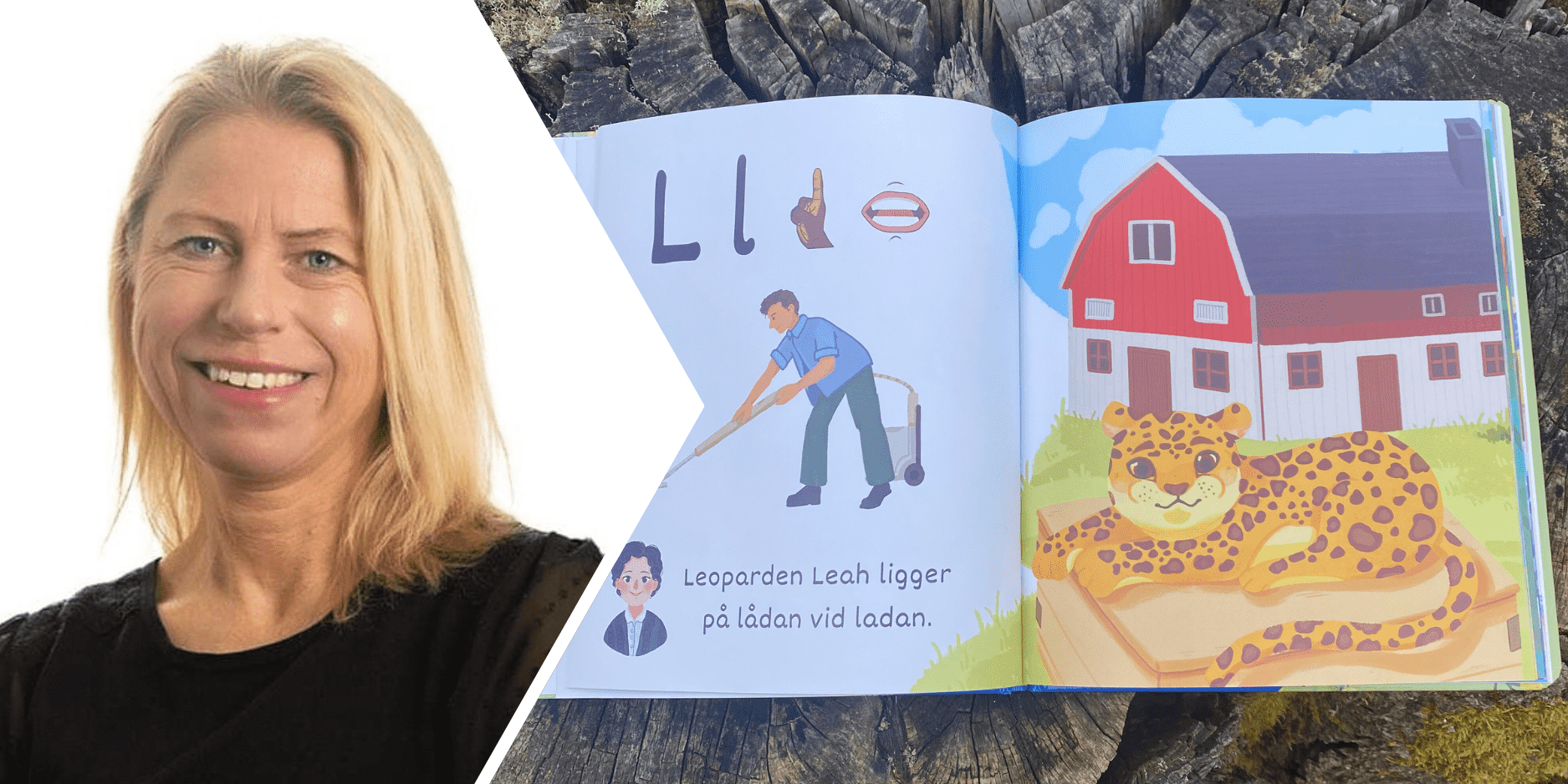
Preschool teacher Karin: Letter game that leads to reading
Learning to read rarely starts with whole words or sentences. It starts with sounds. With discovering that the letter S says / sss /, that the same sound is heard first in sol , and that there is a pattern to how language sounds and how it looks. This realization – that sounds and letters are related – is an important milestone in children’s language development. And it is here, fundamentally, that reading begins.
Research shows that phonological awareness – the ability to identify, play with, and manipulate the smallest sound units of language – is one of the most crucial factors in children learning to read fluently . It is not just about recognizing letters, but about understanding how the sounds of language work. For children who develop this awareness early, the path to reading becomes both easier and more enjoyable ( Ehri et al., 2001 ).
Phonological awareness does not develop in a vacuum. It is formed in a context where children listen, imitate, rhyme, make sounds, play with words – and where adults put words to what is happening. For example, when we point to a letter, say its sound and at the same time show a word that begins with the same sound, we build bridges in the child's brain. It is precisely these everyday, language-rich moments that research shows make a difference.
To support children's phonological awareness, a language-rich everyday life is needed – conversations, rhymes, sound games and curious questions. But it can be difficult to know where to start, or how to make it concrete and fun. Here, clear and research-based materials can be an important help. One example is Readioo's new letter book and posters , developed together with a licensed speech therapist. They give children the opportunity to playfully explore the connection between letters and sounds, and give adults a simple tool to build on in conversations and games.
The next time you sit with a child on your lap or stand at the kitchen table – take a moment to play with sounds. Using letters, pictures and shared curiosity, it becomes easier to create meaningful moments that strengthen language and a love of reading. It may look like play, but that is exactly how reading begins.
---------------------------
Karin Gifvas is a preschool, primary school and special education teacher with deep expertise in reading, language and writing development. With extensive experience working with digital services and products, she has a strong focus on creating accessible and inspiring learning environments. Through her work, she strives to give all children the best conditions to develop a rich language, a strong desire to read and a curiosity for learning.
Reference
Ehri , LC, Nunes, SR, Willows, DM, Schuster, BV, Yaghoub-Zadeh, Z., & Shanahan, T. (2001). Phonemic Awareness Instruction Helps Children Learn to Read: Evidence from the National Reading Panel's Meta-Analysis . Reading Research Quarterly , 36(3), 250–287.

